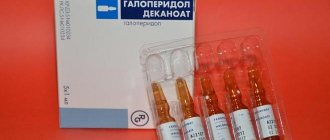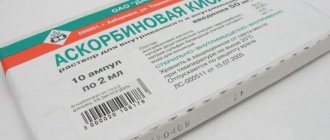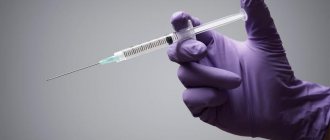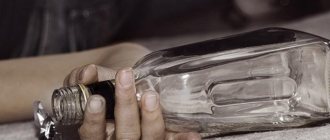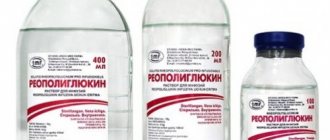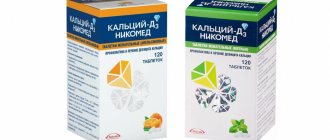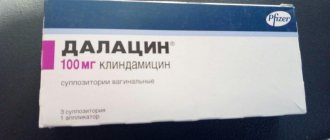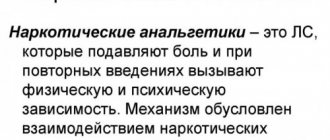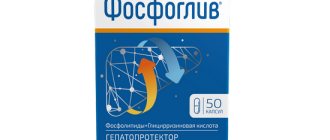Pharmacological properties
Pharmacodynamics
Mannitol is an osmotic diuretic that promotes water retention in the renal tubules and an increase in urine volume due to increased osmotic pressure in the blood plasma and filtration in the glomeruli. In this case, mannitol is practically not reabsorbed, and there is no subsequent tubular reabsorption.
The effect of the active component of the drug is manifested mainly in the proximal tubules, although a slight effect is observed in the collecting ducts and the descending loop of the nephron. Mannitol does not penetrate tissue and cellular barriers (for example, the blood-brain barrier) and does not lead to an increase in residual nitrogen in the blood. The drug increases the osmolarity of blood plasma, which causes the transport of fluid from tissues (in particular, the brain or eyeball) into the vascular bed.
Diuresis is combined with a moderate increase in natriuresis, and this does not affect the excretion of potassium from the body. The diuretic effect is directly proportional to the increase in the concentration of mannitol in the blood. Mannitol is considered ineffective for filtration dysfunction of the kidneys. With azotemia accompanying ascites or cirrhosis of the liver, the drug causes an increase in circulating blood volume.
Pharmacokinetics
When taken orally, mannitol is poorly absorbed, so it is administered intravenously. The volume of distribution of the substance is identical to the volume of extracellular fluid, since distribution occurs exclusively in the extracellular sector. Mannitol is slightly metabolized in the liver to form glycogen. Its half-life is approximately 100 minutes. The drug is excreted through the kidneys, and this process is determined by glomerular filtration, which is practically unrelated to tubular reabsorption and secretion. With intravenous administration of 100 g of Mannitol over 3 hours, 80% of it is excreted in the urine. In patients with renal failure, the half-life of mannitol may increase to 36 hours.
Mechanism of action of Mannitol
Pharmacodynamics
It acts by increasing blood pressure due to the distribution of molecules of the active substance, as well as the absence of its reabsorption from the urine contained in the lumen of the tubules into the lymph and blood. Causes the outflow of fluid from the tissue into the vessels and increases the blood volume in the patient's body.
Pharmacokinetics
The drug has the property of rapid penetration from the blood, where it is directly administered, into the intracellular space. It is subsequently distributed throughout the extracellular fluid.
Excreted through the kidneys.
In patients with bronchial asthma, the drug provokes spasm of the respiratory tract.
Indications for use
Indications for Mannitol are:
- Intracranial hypertension (caused by renal or renal-hepatic failure), cerebral edema;
- Forced diuresis in case of poisoning with salicylates, barbiturates;
- Combination therapy of oliguria in case of acute renal or renal-hepatic failure with active filtration capacity of the kidneys;
- Post-transfusion complications arising from the introduction of incompatible blood;
- Prevention of hemolysis during surgical operations using extracorporeal circulation (to prevent renal ischemia and acute renal failure).
Conditions for dispensing from pharmacies
Available in pharmacies only with a doctor's prescription. List B.
Is it sold without a prescription?
Not available without a prescription.
What is the price
The cost varies from 76 to 130 rubles and depends on the concentration of the active substance.
Contraindications
- Hemorrhagic stroke;
- Subarachnoid hemorrhage, not including bleeding during craniotomy;
- Left ventricular failure (especially with concomitant pulmonary edema);
- Anuria in acute necrosis of renal tubules;
- Severe dehydration;
- Hypochloremia, hyponatremia, hypokalemia;
- Hypersensitivity to the components of the drug.
It is recommended to use Mannitol with caution during pregnancy, breastfeeding, and in elderly patients.
Drug interactions
With other drugs
Incompatible with cardiac glycosides, as it provokes a toxic effect.
For ischemic stroke, the administration of osmotic drugs is indicated.
Strengthens the effect of diuretics.
It is not recommended to combine it with the antibiotic Neomycin, as it may cause
t hearing impairment, in the functioning of the vestibular apparatus and kidneys.
Alcohol compatibility
When using mannitol, avoid drinking alcohol.
Instructions for use of Mannitol: method and dosage
Mannitol solution is intended for intravenous (IV) drip or slow stream administration. Before use, the solution must be heated in a water bath to a temperature of 37 °C.
Recommended daily dosage:
- Prevention: at the rate of 0.5 g per 1 kg of patient weight;
- Treatment: 1-1.5 g per 1 kg of weight, but not more than 140-180 g per day.
During surgical operations using artificial circulation, 20-40 g of solution is injected into the apparatus before perfusion begins.
Before starting treatment for patients with oliguria, a trial intravenous drip (over 3-5 minutes) of the drug is required at a dose of 0.2 g per 1 kg of weight. If there is no increase in diuresis rate to 30-50 ml/h 2-3 hours after infusion, further use of the drug is not advisable.
Release forms and composition
A solution for infusion is available (100 mg/l, 150 mg/l or 200 mg/l) or a powder substance for making a solution.
The active ingredient is an alcohol from the sugar group mannitol (a stereoisomer of sorbitol, the formula of mannitol is C6H8(OH)6). The solution also contains water for injection and sodium chloride.
In case of overdose or in case of insufficiently slow administration, pulmonary edema is possible.
The colorless liquid is packaged in bottles with a capacity of 200 ml or 500 ml. One cardboard box can contain from 15 to 20 bottles, depending on the volume.
The powder is packaged in plastic bags weighing 1 or 2 kg.
special instructions
Due to the high risk of developing pulmonary edema in patients with left ventricular failure, the use of Mannitol must be combined with fast-acting loop diuretics. Treatment should be accompanied by monitoring blood pressure, diuresis, and electrolyte levels (potassium, sodium) in the blood serum.
When reusing Mannitol solution, water and electrolyte balance should be carefully monitored.
Before starting the drug administration, the patient should be warned about the need to inform medical staff about the occurrence of headache, blurred vision, symptoms of vomiting, and dizziness during the infusion. If these complaints are received, further administration must be stopped and measures taken to prevent the development of subdural and subarachnoid bleeding.
If signs of dehydration appear, fluids must be administered.
The use of the drug in heart failure is possible only in combination with loop diuretics.
According to the instructions, Mannitol can be used for hypertensive crisis with encephalopathy.
Side effects
The most common side effects in this case include signs of dehydration (dry skin, thirst, low blood pressure, vision, dyspepsia), disorders of the cardiovascular system (rapid heartbeat, chest pain), decreased levels of potassium and sodium, skin rashes, inflammation of the walls of venous vessels, the occurrence of subdural or subarachnoid bleeding, necrotic damage to soft tissues if used incorrectly.
Reviews of Mannitol
As reviews of Mannitol testify, it is widely used both in adult patients and in pediatric practice. Many patients consider it a highly effective drug. The drug is often prescribed for the treatment of hydrocephalus in children, which can improve sleep and significantly reduce pain.
However, some patients note that Mannitol therapy, in addition to the observed improvement in condition, is accompanied by side effects - tachycardia and chest pain. Experts advise that when the first warning signs appear, immediately consult a doctor who will select a suitable replacement for the drug.
Features of application
During pregnancy and lactation
Pregnant women and nursing mothers are prescribed under the strict supervision of a physician.
In childhood
Children are administered infusionally in special doses depending on body weight. Medical practice has shown the effectiveness of mannitol for hydrocephalus in children.
Inhalations with the described medicine are not recommended for children under 6 years of age.
For impaired renal function
In case of severe kidney damage (renal failure, etc.), the drug is not used.
Additional instructions
In patients with bronchial asthma, the drug provokes spasm of the respiratory tract.
In case of chronic heart failure, it must be combined with fast-acting “loop” diuretics.
When performing inhalations, it is necessary to give the patient a bronchodilator 15 minutes before the procedure and monitor the condition for timely relief of bronchospasm.
Blood pressure levels and the amount of potassium and sodium in the serum should be constantly monitored.
Effect on concentration
No effect on concentration was noted.
Reviews from doctors
Alena Igorevna, pediatrician, Moscow region
As practice in the children's department of a regional hospital has shown, this remedy is effective for the treatment of hydrocephalus of the brain in children, especially in mild forms. As a result, children experience improved sleep and decreased headaches.
Sergey Anatolyevich, resuscitator, Tomsk
In the work of the intensive care unit, the drug proved to be a good diuretic for accelerating the elimination of toxic substances in case of poisoning. At the same time, I would like to recommend carefully studying the medical history and not allowing its use in patients with direct contraindications, since complications can lead to death.

